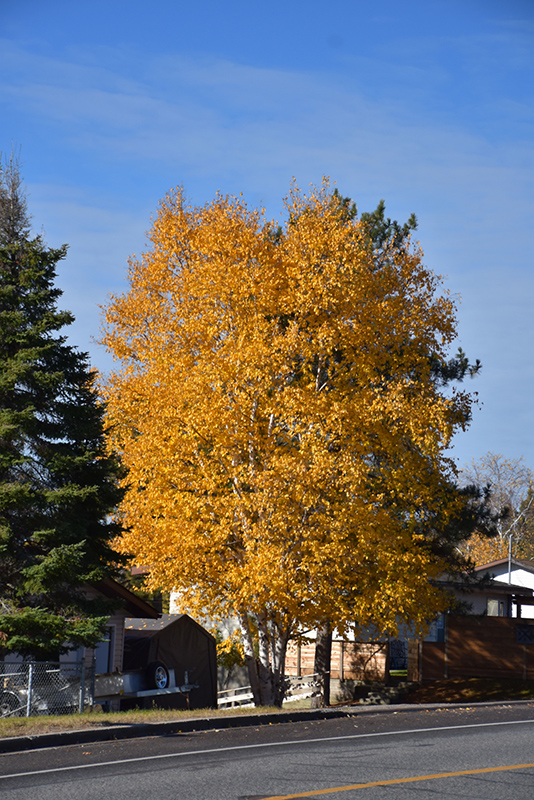Digging deeperPlant Library
Clump Paper Birch
Betula papyrifera '(clump)'
Height: 40 feet
Spread: 30 feet
Sunlight:
![]()
![]()
Hardiness Zone: 3
Other Names: White Birch, Canoe Birch
Description:
Stunning multi-stemmed form of paper birch shows off snow-white peeling bark and gold fall color; needs adequate moisture and well-drained soils; a great accent tree, and one of the best for winter value, keep it happy to avoid problems with birch borer
Ornamental Features
Clump Paper Birch has dark green deciduous foliage on a tree with an oval habit of growth. The pointy leaves turn an outstanding gold in the fall. The peeling white bark is extremely showy and adds significant winter interest.
Landscape Attributes
Clump Paper Birch is a multi-stemmed deciduous tree with a shapely oval form. Its average texture blends into the landscape, but can be balanced by one or two finer or coarser trees or shrubs for an effective composition.
This is a relatively low maintenance tree, and is best pruned in late winter once the threat of extreme cold has passed. It is a good choice for attracting birds to your yard, but is not particularly attractive to deer who tend to leave it alone in favor of tastier treats. Gardeners should be aware of the following characteristic(s) that may warrant special consideration;
- Insects
Clump Paper Birch is recommended for the following landscape applications;
- Accent
- Shade
Planting & Growing
Clump Paper Birch will grow to be about 40 feet tall at maturity, with a spread of 30 feet. It has a low canopy with a typical clearance of 3 feet from the ground, and should not be planted underneath power lines. It grows at a medium rate, and under ideal conditions can be expected to live for 40 years or more.
This tree does best in full sun to partial shade. It prefers to grow in average to moist conditions, and shouldn't be allowed to dry out. It is not particular as to soil type or pH. It is somewhat tolerant of urban pollution. Consider applying a thick mulch around the root zone in winter to protect it in exposed locations or colder microclimates. This is a selection of a native North American species.
A NetPS Plant Finder tool
This Plant Library is for informational purposes only. We may or may not carry the items listed. During many times of the year, we may carry many more plants in our store than are listed in the Plant Library. Please contact us directly at 303-690-4722 or visit our store for current availability and for assistance.
